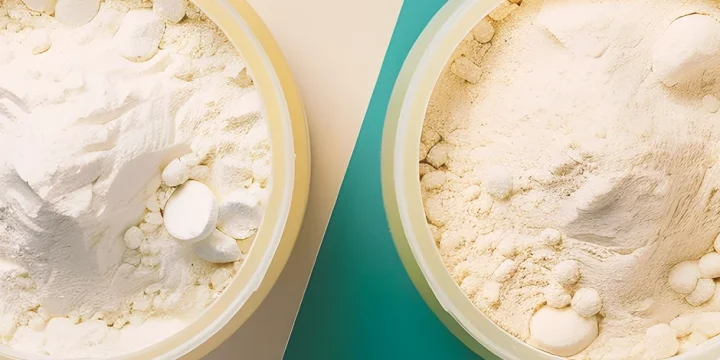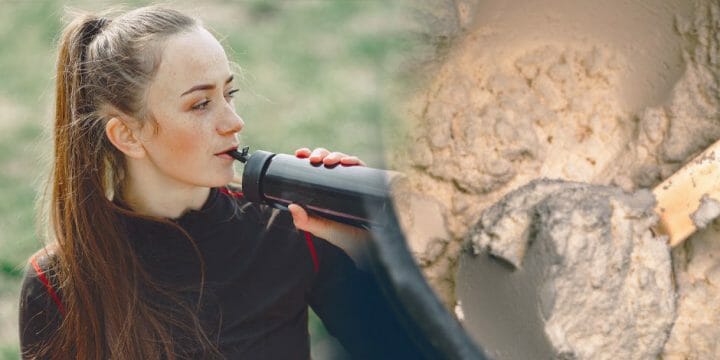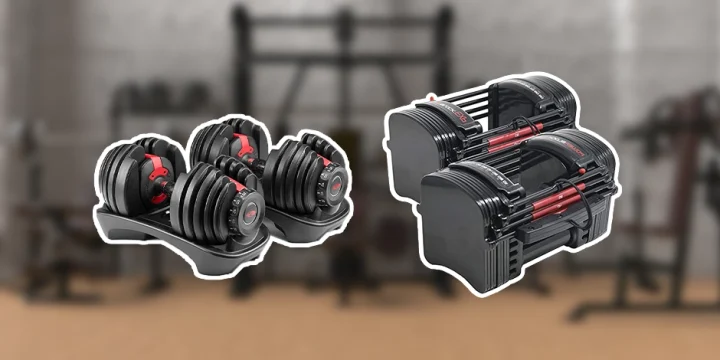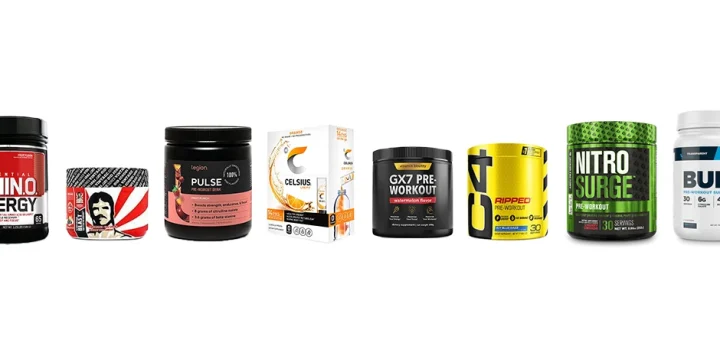Are you hitting the gym hard and sticking to a disciplined diet? Great! Now, let's boost those gains with creatine, the most extensively researched supplement in the fitness realm.
The big question is: when is the best time to take it, before or after your workout?
In this quick guide, I'll explore the optimal timing for creatine intake and in what amounts, ensuring you maximize the benefits of this powerful supplement.
Let's dive in.
Quick Summary
- To maximize workout benefits, creatine can be effectively taken either before or after exercising, enhancing energy and muscle growth.
- Two creatine supplementation approaches are highlighted: an initial high-dose 'loading phase' followed by a 'maintenance phase' for consistent creatine levels.
- The National Institutes of Health (NIH) confirms that long-term creatine supplementation, for up to five years, is safe for healthy individuals without adverse effects on kidney function.
- Based on my experience, consistent creatine supplementation, regardless of timing, can significantly improve workout performance and muscle development.
When Is the Best Time to Take Creatine?

The best time to take creatine can be either before or after your workout, but consistency in supplementation is key for effective results.
Consider these common options when determining the optimal time to take creatine:
1. Before working out
Taking creatine monohydrate soon before working out will help you exert the energy you need. This dietary supplement will help you exert more power, lift more weight, and complete a more challenging workout. Of course, this all leads to more muscle growth.
2. After working out
If you take creatine monohydrate soon after working out, your muscles are ‘primed’ and ready to absorb your post-workout snacks or meals, like protein and carbohydrates. From this perspective, they’d also be prepared to absorb creatine.
If you prefer taking creatine post-workout, try blending it with whey protein. These supplements complement each other, synergistically enhancing your progress towards fitness goals.
For more information, read our post on Creatine vs. Whey protein.
Yet, if you're in the mood for a refreshing post-workout drink, then check out the best post workout drinks. They're a perfect way to replenish and rejuvenate after all that hard work.
3. Anytime you want
Throughout my athletic career, I've heard various theories on creatine timing. But here's what I've learned: Your body is smart.
Whether it's during my soccer training days or current MMA routines, as long as I'm consistent with my creatine intake, my muscles adapt and use it effectively. It's not just about when, but about how consistently you supplement.
Overall, I’d suggest taking creatine immediately, either before or after working out.
And for a more detailed explanation of taking creatine monohydrate, you can also watch this video by Tom Johnson from Myprotein creatine routine.


How Much Creatine Should You Take?
You should take dosage of creatine supplementation depending on whether you choose the loading phase or the maintenance phase.
I've found that sticking to the recommended doses of creatine supplementation not only enhances my performance but also ensures I'm fueling my body correctly.
Creatine, or creatine monohydrate (the difference between creatine monohydrate and creatine HCL), has been shown to directly support high-intensity exercise performance, speed up muscle growth and recovery, and may lower blood sugar, according to a 2021 study published in the Nutrients Journal [1].
So, if you have dietary restrictions, especially if you’re vegan or vegetarian, creatine dosing can especially help. Those on plant-based diets usually have lower stores of creatine since the only source of creatine is in animal proteins.
Placing people on a lacto-ovo vegetarian diet for 26 days causes a significant decrease in muscle creatine. In vegetarians, creatine supplementation may have significant benefits. These include improvements in physical performance and improvements in brain function. Many of these effects are stronger in vegetarians than meat eaters.
Dr. Atli Arnarson, Ph.D. in Nutrition, BSc in Biology
Certainly, older adults seeking to maintain muscle health can also significantly benefit from creatine supplementation, as it effectively combats sarcopenia, the age-related decline in muscle mass and strength.
Moving on to the practical aspects of using creatine monohydrate, there are two main methods to consider: the loading phase and the maintenance phase.
1. Loading Phase
This form of creatine loading has you taking in a high amount in a short time so that you can quickly saturate your cells.
In my early MMA days, I used the loading phase to rapidly boost my creatine levels. Quick saturation meant faster results, which was vital for my intense training schedule.
From there, you shift into the maintenance phase, which is how you’d maintain that high level of creatine.
To start creatine loading, you’ll need around 15–25 grams each day for one week. By the end of the week, you’ll be pumped with creatine.
Continuing the loaded phase for longer than this is like overwatering a plant; you won’t see more gains past this point. The main benefit of loading is to see the benefits of creatine more quickly.
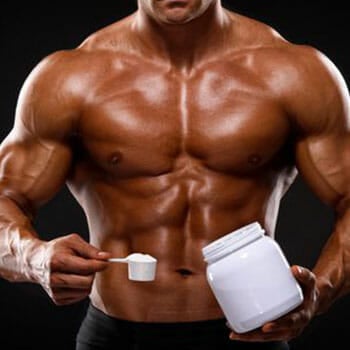
2. Maintenance phase
This phase can either be done after loading or on its own.
After the initial loading, I switch to maintenance. It's a smoother approach, especially important to avoid bloating—something I couldn't afford before a big match.
This phase will require a creatine dose of about 5–10 grams a day. You should reach peak-creatine intake at around 3 to 4 weeks.
After this amount of time, just continue at this level of intake.
You can further prolong the maintenance phase, as the National Institutes of Health (NIH) acknowledges that long-term creatine supplementation (up to five years) has been deemed safe for healthy individuals, with no adverse effects on kidney function in healthy populations [1].
3. Cycling Creatine
There are different beliefs on whether you should cycle on and off creatine.
The main benefit of cycling is that you’ll have fewer withdrawal symptoms than someone who has been on it for long periods of time. This depends on person to person, so I’d recommend cycling off at least twice to see how you feel.
Related Articles:
Any Side Effects?
The potential side effects of creatine monohydrate supplementation include weight gain, kidney and liver concerns, digestive issues, and the possibility of muscle cramps.
For most people, the effects are relatively mild and can be comfortably ignored.
However, if you have any special health considerations, it’s worth giving this list a look. Wellness and safety should be your first priority.
- Weight gain. According to the Mayo Clinic, weight gain from creatine supplements is due to water retention, not fat, and typically reverses after cycling off, making it important to monitor for sports with strict weight categories [2].
- Kidney and liver problems. Research published in the Journal of Renal Nutrition indicates that creatine synthesis, mainly in the kidneys and liver, is safe despite raised blood creatinine levels, a common marker for organ issues [3].
- Digestive problems. Given that supplements can alter your internal chemistry, it's normal for your GI tract to react, as stated in the Journal of the International Society of Sports Nutrition [4]. To avoid these issues, stick to the recommended 3-5 grams of creatine or 20 grams spread over 4 or 5 meals during loading phases, and for any digestive discomfort, consider exploring the best digestive enzymes and probiotics available.
- Muscle cramps. One theory suggests that creatine may cause muscle cramps due to its water-drawing properties, shifting water to muscle mass, but this lacks scientific backing, according to the Gatorade Sports Science Institute [5].
Related:
FAQs

When Should I Take Creatine on off Days?
You should take one serving in the morning and one in the evening, on off days or rest days. This will help your body maintain your creatine levels throughout the day.
How Long Should I Be Taking Creatine to Get Results?
You should be taking creatine for around 6 weeks or up to three months to get the results, and then cycle off it for a month. Some people see or feel a difference in their performance in as early as two weeks.
Is It Okay to Take Creatine Even if I’m Not Working Out?
It’s okay to take creatine even if you’re not working out; it won’t do any harm. It’s one of the safest supplements out there, and it doesn’t impact your metabolism.
Is It Okay to Take Creatine With Pre-workout?
It’s ok to take creatine with pre-workout supplements, so you’re prepared on all fronts to have a power-charged workout. Creatine is a muscle growth and strength-building supplement, whereas pre-workout is usually a combination of supplements that enhance performance by increasing energy and endurance.
Can I Take Too Much Creatine?
You can take too much creatine if you take more than the recommended amount (3-5 grams per serving). Nothing bad will happen regarding your gains, but you might experience an upset stomach or other mild side effects.
Can I Take Creatine on an Empty Stomach?
You can comfortably take 5–10 grams of creatine on an empty stomach without experiencing any GI trouble. Compared to other things, creatine is difficult for the body to absorb. Yet, to help yourself out, try to eat a quick protein bar or smoothie to boost absorption.
Can I Take Creatine With Caffeine?
You can take creatine with caffeine, but this combination is best reserved for days you really need to perform, like a sports event. Because caffeine increases your urine output, it competes with creatine for water. This can cause your creatine to be less effective.
What Happens When You Stop Taking Creatine?
When you stop taking creatine, you may notice some minor withdrawal symptoms, such as sluggishness and muscle fatigue. Because your body has been saturated with the supplement, it might have slowed its natural production of creatine. It usually takes up to a month for your body to return to its normal level of production. You might also notice some weight loss since water retention has decreased.
Related Post: Creatine Expiration
References:
- https://www.ncbi.nlm.nih.gov/pmc/articles/PMC8228369/
- https://www.mayoclinic.org/drugs-supplements-creatine/art-20347591
- https://pubmed.ncbi.nlm.nih.gov/31375416/
- https://pubmed.ncbi.nlm.nih.gov/28615996/
- https://www.gssiweb.org/sports-science-exchange/article/the-safety-and-efficacy-of-creatine-monohydrate-supplementation-what-we-have-learned-from-the-past-25-years-of-research
About The Author
You May Also Like

